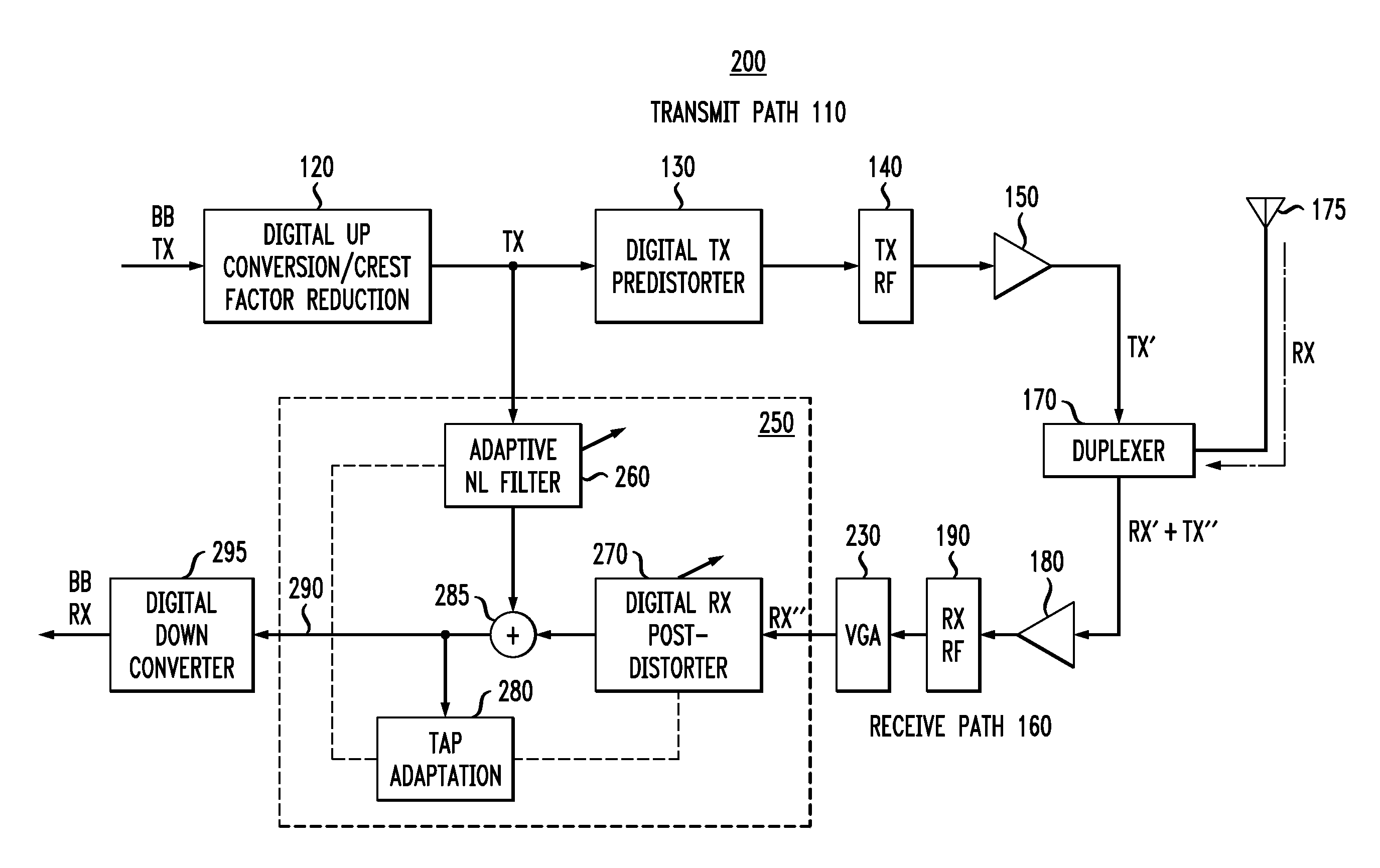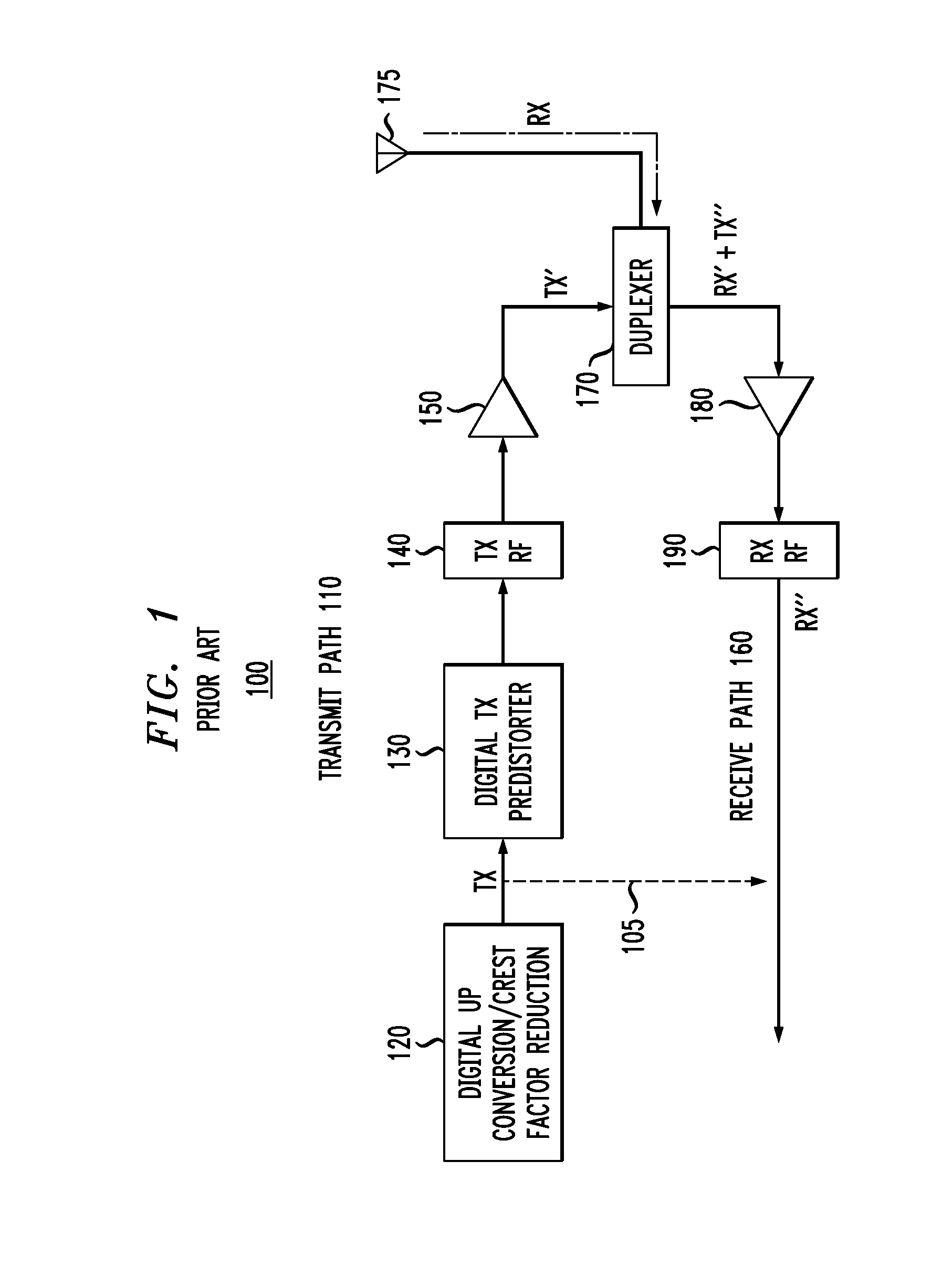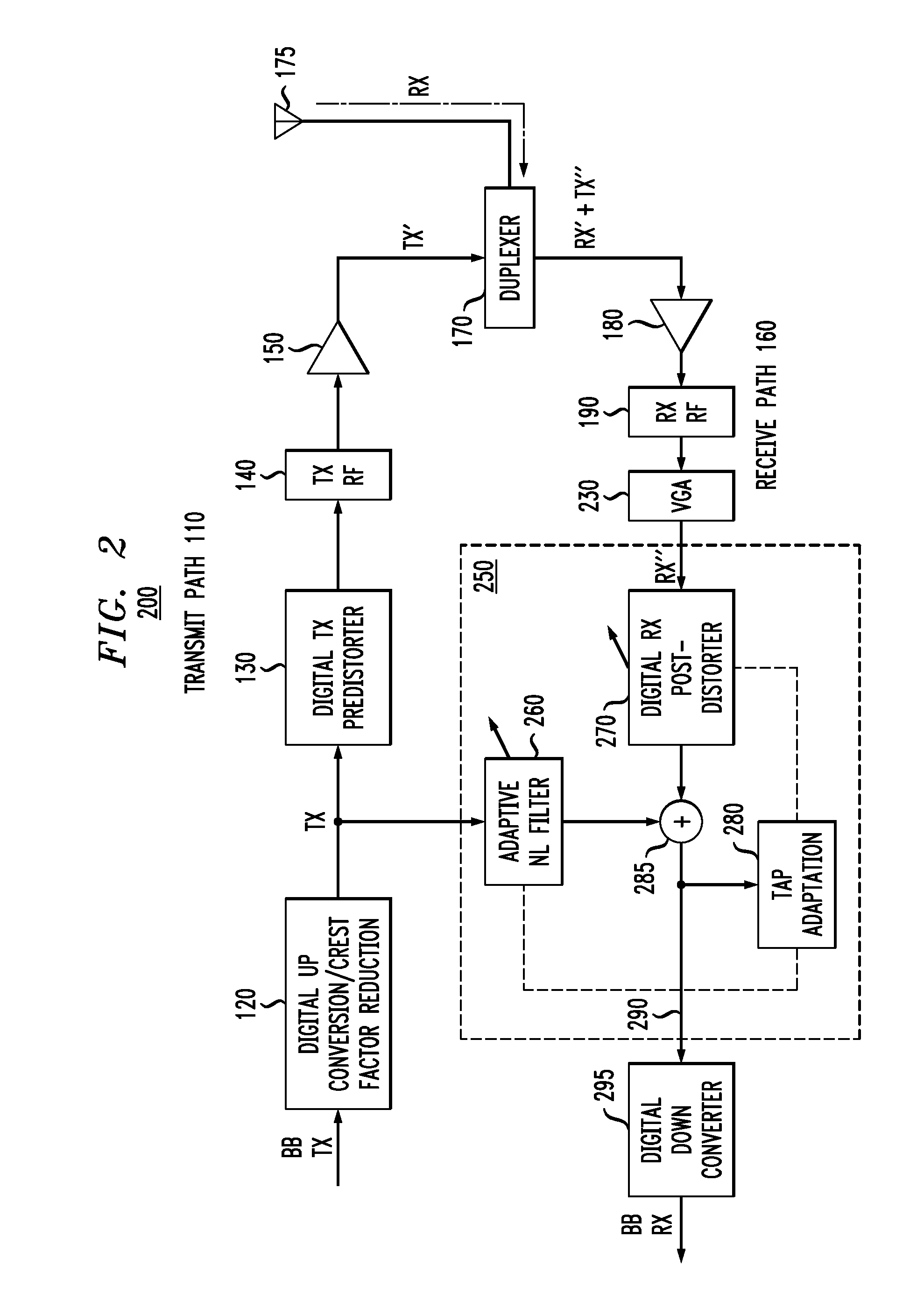Non-Linear Interference Cancellation For Wireless Transceivers
a technology of non-linear interference and wireless transceivers, which is applied in the field of digital signal processing techniques, can solve the problems of interference signal leakage through the duplexer to the receiver, interference signal interference interference, and interference interference, etc., and achieve non-linear blocking effects. the effect of dominant blocking
- Summary
- Abstract
- Description
- Claims
- Application Information
AI Technical Summary
Benefits of technology
Problems solved by technology
Method used
Image
Examples
Embodiment Construction
[0012]Aspects of the present invention provide non-linear interference cancellation techniques for wireless transceivers. FIG. 1 illustrates portions of an exemplary conventional transceiver communication device 100. The exemplary conventional transceiver communication device 100 is part of any Frequency-Division Duplexing (FDD) communication system, where the transmit signal is in a separate band than the receive signal. The separation (or gap) between the transmit and receive frequency bands reduces the impact of the transmitter interference on the receiver, but does not eliminate the interference.
[0013]As shown in FIG. 1, the exemplary conventional transceiver communication device 100 comprises a transmit portion 110 and a receive portion 160 connected by a duplexer 170. The transmit signal is transmitted through the duplexer 170 and an antenna 175. The receive portion 160 receives a signal through the antenna 175 and the duplexer 170 and converts the received signal into a baseb...
PUM
 Login to View More
Login to View More Abstract
Description
Claims
Application Information
 Login to View More
Login to View More - R&D
- Intellectual Property
- Life Sciences
- Materials
- Tech Scout
- Unparalleled Data Quality
- Higher Quality Content
- 60% Fewer Hallucinations
Browse by: Latest US Patents, China's latest patents, Technical Efficacy Thesaurus, Application Domain, Technology Topic, Popular Technical Reports.
© 2025 PatSnap. All rights reserved.Legal|Privacy policy|Modern Slavery Act Transparency Statement|Sitemap|About US| Contact US: help@patsnap.com



